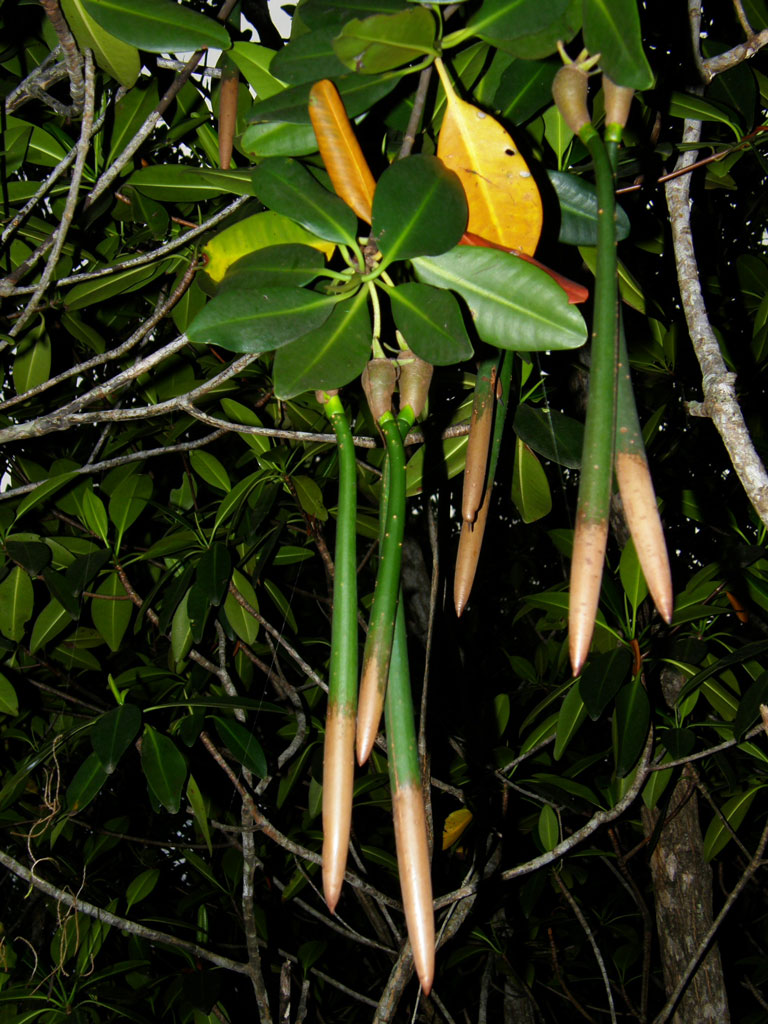It’s Pretty Easy Being Green
By Jessie Dominick
 |
| Red Mangrove Propagules |
 |
| Sargassum (brown algae) |
In Florida, there are seagrass beds and algae everywhere in the ocean. And there are many types of them, too! These algae and seagrasses are usually green from chlorophyll, but they can be red at times depending on depth, water quality, ect. Today, in Long Key State Park, quite a few of these grasses and algae were viewed either on the shore or submerged in the water. These species include:
- Turtle Seagrass: This seagrass is the most common seagrass. It looks like long blades of grass that haven’t been mowed in months. This grass is long, a bit wide, but very thin. It is named turtle grass because it is commonly fed on by green sea turtles. This grass was also seen in red today. Many algae and even manatee grass can be seen mixed in big chunks of this grass.
- Manatee Seagrass: Manatee grass is a small grass that is thick but usually much shorter than turtle grass. It looks almost like manatee’s whiskers, and it is commonly fed on by manatees.
- Shoal Grass: Shoal grass looks like a mixture of the other two seagrasses listed. It is short like manatee grass, but it’s thin like turtle grass. This seagrass was seen in patches today rather than huge chunks of it all together.
- Merman Shaving Brush Algae: This algae is a small, cute algae that looks like an old time shaving brush. It has a rounded, thin stem at the base, and the top poofs out, looking like the brush. This was also seen in small patches, and it was mixed in with a bunch of seagrasses.
- Sargassum: Sargassum is the most common brown algae. It’s a seaweed with “bubbles” on it. This can be seen even all the way up in New Jersey. It can often be used for medicine purposes.
- “Bubble Wrap” Algae: Although this is not the proper name for this algae, it is a green algae that is soft and squishy and looks like bubble wrap. When dead (and washed up on the shore), it turns white.
Some other fun things seen here:
- Red Mangrove Propagules: These are seeds of red mangroves. They look like oversized pea pods. The red mangrove is the most common mangrove.
- Sea Lice: Called sea lice because they are small and jump around on the shore. When you step by the water and life your feet, the all come bouncing out. They do bite, but it does not hurt very badly or leave a mark
- Triggerfish: Often near piles of sargassum. An averaged sized fish.
While exploring the ocean and snorkeling around today, it really put things into perspective for me on how much the seagrasses can actually dominate the ocean floor and provide a safe home and hiding place for smaller organisms from predators. It was interesting to see the split between the types of seagrass in some areas and others where the seagrasses were mixed. I actually saw a snail slowly crawling up one of the blades of turtle grass because he was scraping off the accumulating algae as his food. The seagrasses and algaes really are important in maintaining the ecosystems they inhabit.
ReplyDeleteThese are great descriptions on what the seagrass and the algal species look like. Macie makes a good point too. Getting in there and snorkeling through the seagrass beds was really cool even if we didn't see many organisms. They provide a lot more protection than I thought they would because it was so thick. I can see why this is an important habitat for animals seeking cover or serving as a nursery for young reef fish.
ReplyDelete